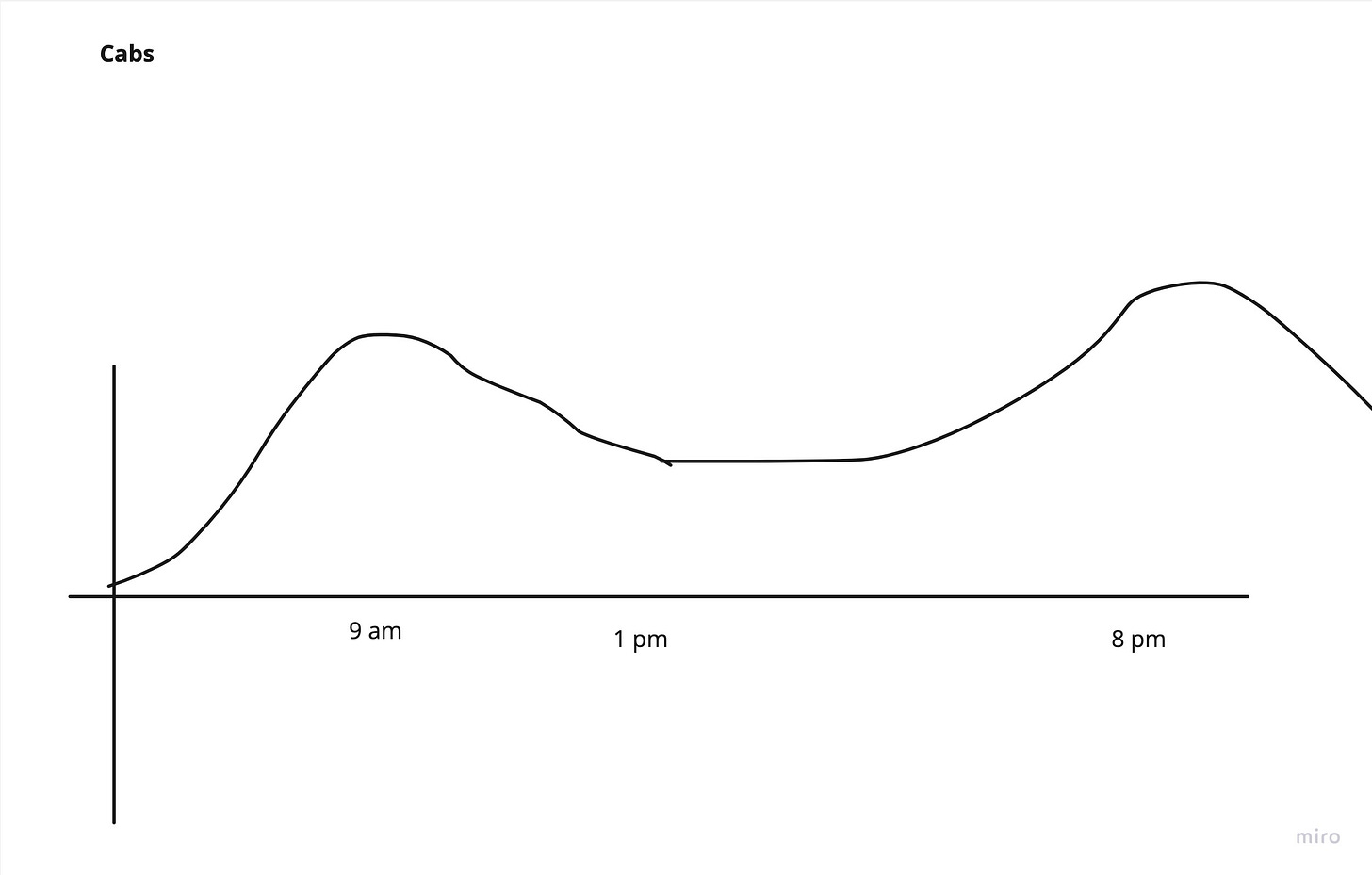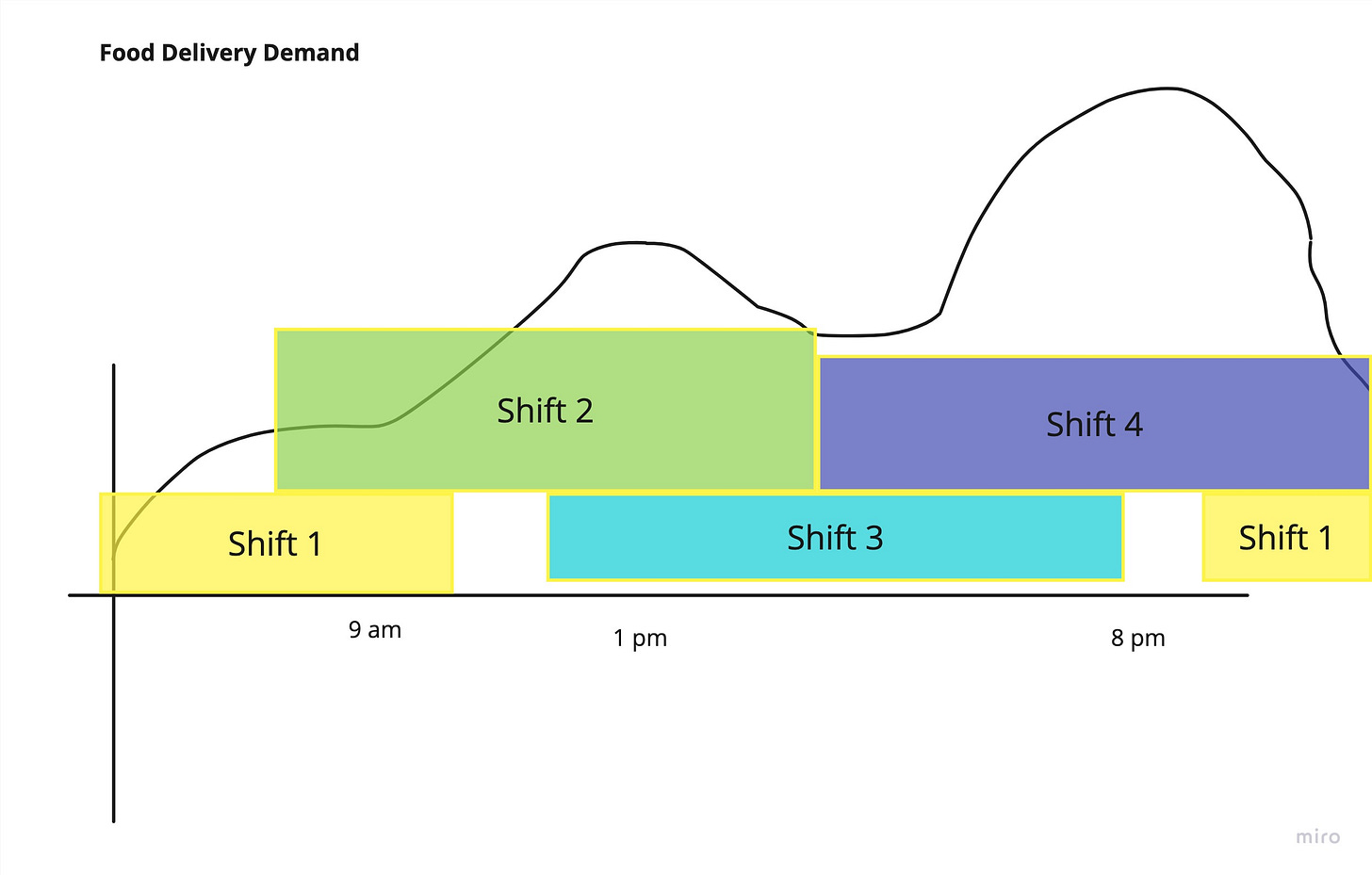Capacity Planning Basics
The basics of how to do Capacity Planning activity for your operations to match supply and demand.
Hey folks 👋, Bala here with another issue of OpsWorld. If it's your first time here, we generally write about technology and how it impacts the world of Operations.
Before we begin,
OpsWorld is created by the team at Zorp. In simple terms, Zorp helps you build powerful applications to run your operations in minutes. Build anything from the simplest KYC forms to really complex supply chain apps on Zorp in no time.
Let’s talk about Capacity Planning. As usual, we will focus on frontline operations. But the basic principle should apply for different industries.
For the uninitiated,
Capacity Planning means planning your supply for the upcoming demand.
You typically do the capacity planning activity at the beginning of a period. The period depends on the industry. A Food or Grocery delivery company will do this every month (or even every week when you’re growing really fast). A warehouse or factory will do it probably at a quarterly level.
Study your data
The first step here is to study the historical data. My mantra is that at a deep enough level, every operations is unique. So, read your data. Look for the following things.
Total number of orders per hour
Number of orders per day of the week
What are the peaks and off peak hours
Any holidays, sales, or special circumstances.
Typical demand pattern
Using this, you can estimate the demand for the coming month. It will differ quite a bit depending on your business. But here is the basics. Your daily demand might look like this.
(The diagrams are just for illustration and not made for scale. Duh!)
Sample capacity planning
Now, your objective is simple,
Plan to have the right number of people at the right time with the objective to maximize the available supply to address all demand with the constraint to save cost by minimizing the total supply needed.
In this case, you would probably create the per day supply plan like this.
This can be done with the following data points at hand.
Average time for a single task
Total number of working hours
Breaks, other non productive work (Checkin, checkout, kits, parts purchase etc)
Assume buffer for adhoc reasons like vehicle breakdown, weather etc.
What can go wrong
This is assuming that the demand stays the same for every day of the week. The next exercise is to adjust this plan with the following limitations.
Your demand stays for 24X7 (in most cases) and 7 days a week. But your workforce only works for 5-6 days.
The demand changes on weekdays vs weekends. But you cannot hire more people just for Saturday.
There will be holidays, festivals, sales or other external factors that influence the demand
You might face a supply crunch or face competitive pricing pressure. Do you lose demand or do you relax your payment criteria?
Plan for unplanned leaves.
Rostering
The output of this exercise is the Rostering plan. Rostering is where you figure out which worker needs to work in which shift. When you create this, keep the following in mind.
Better to have the same worker doing the same shift during the period. Don’t give someone Night shift on day 1 and day shift on the next day.
Take people’s needs into considerations. There will be personal or medical preferences why someone would prefer a given shift, try to accommodate them. If you really care about employee retention, this is important.
Try to provide continuous days off every week. If you provide more than 1 day off, try to give them together so people can use them wisely
Communicate ahead of time. Please please let people know ahead of time so they can plan their lives.
Give space for feedback. Rostering is known to impact your workforce more than pay. Coz, life happens. Take feedback from your people on the way it is done and how you can improve.
This is not an easy job. You shouldn’t expect it to be.
A sample roster looks like this.
As a closing thought, it is a good idea to compare the planned capacity vs actual results at the end of the month. This will help you improve over a period of time. Also, certain activities like hiring need to be planned upfront. So in those cases, it makes sense to do the exercise slightly ahead of time.
Did you find this useful? If so, consider sharing it in your network. If there is a specific topic in Operations that you want me to address, do let me know in the comments.






